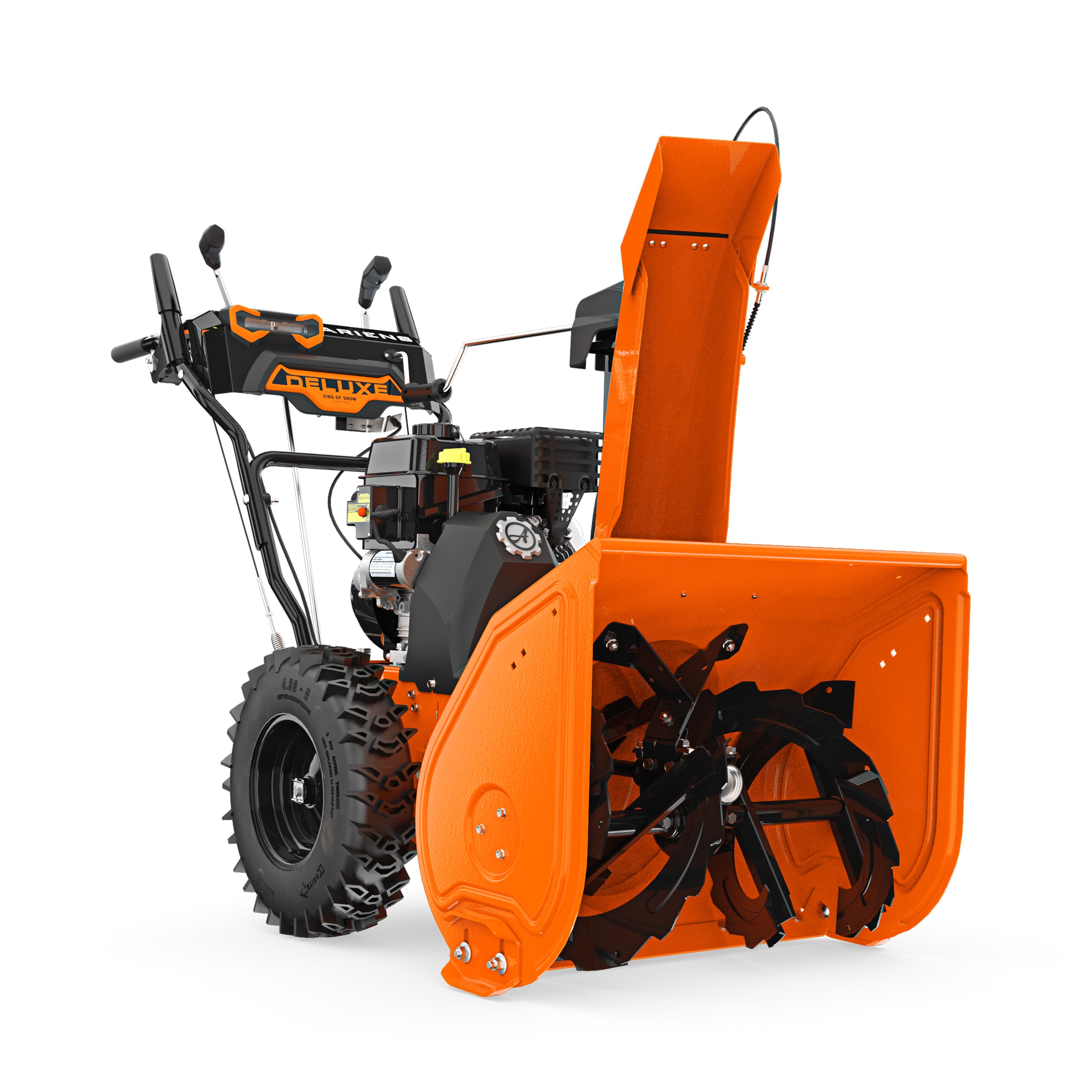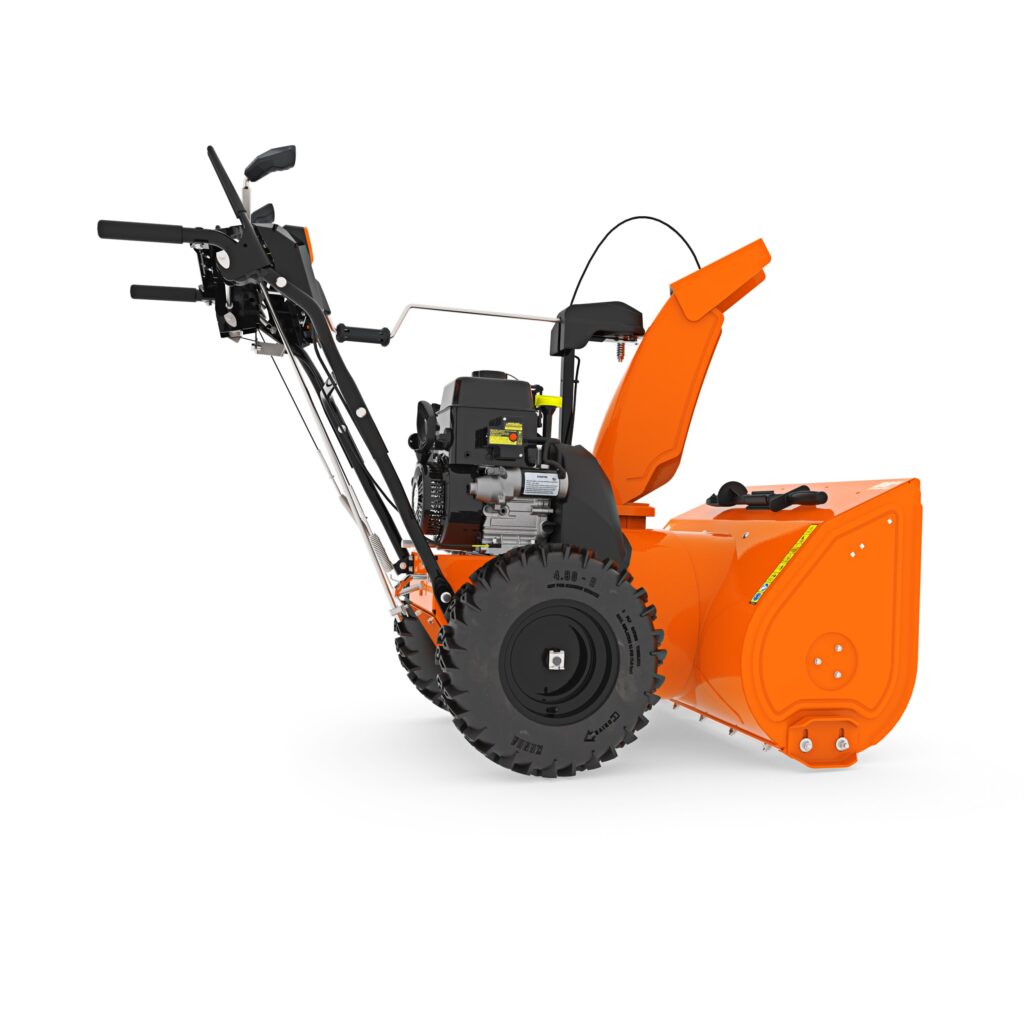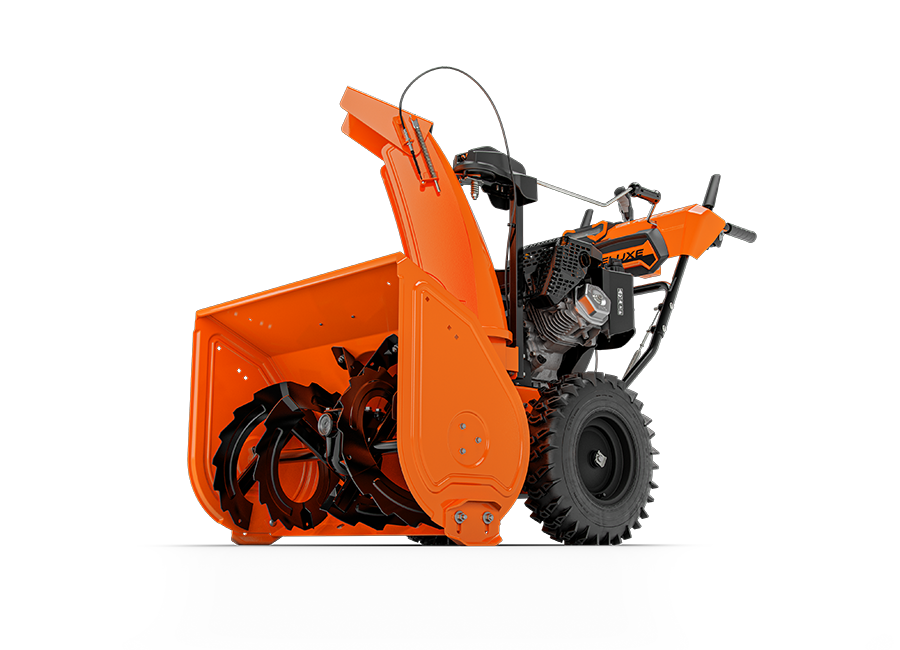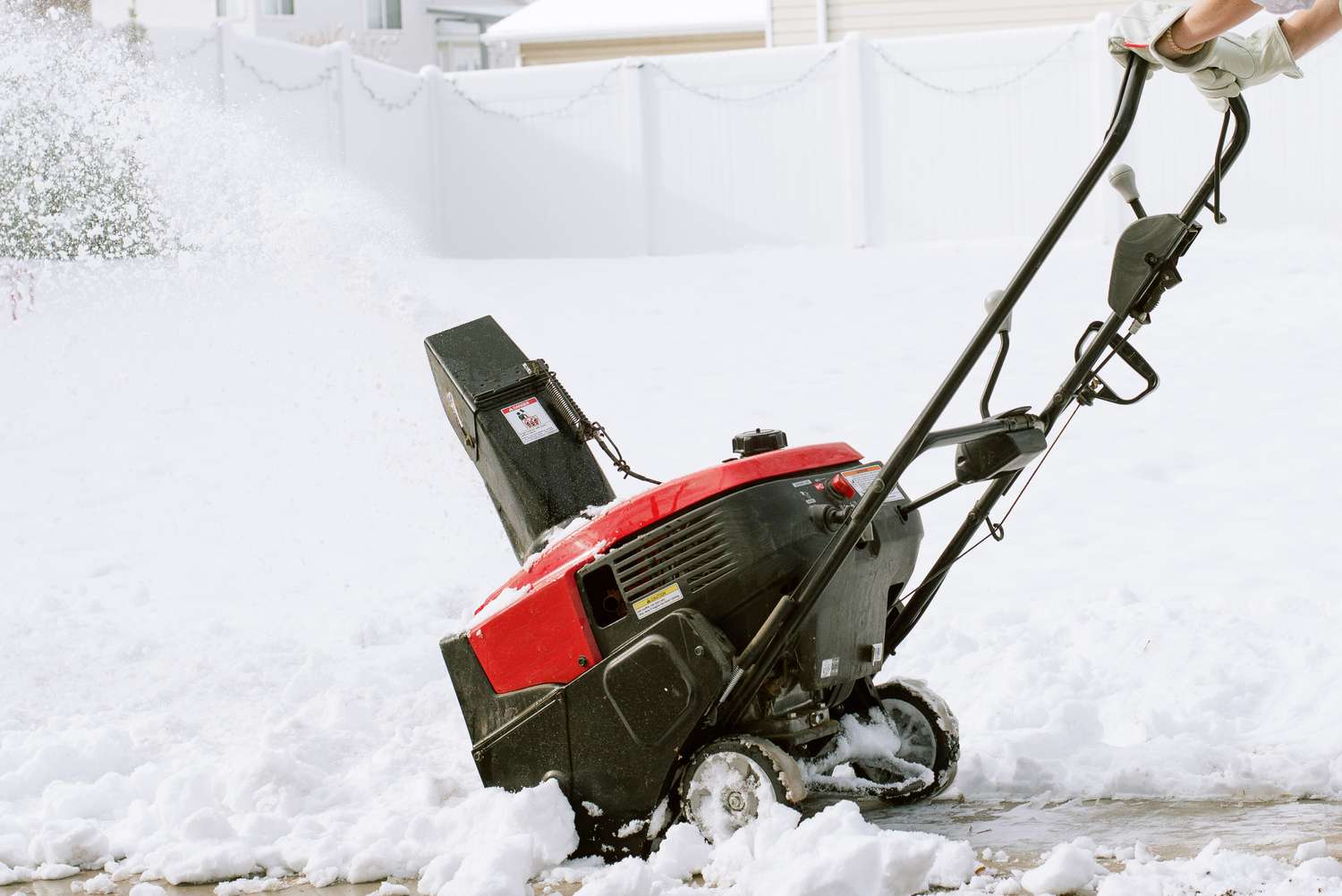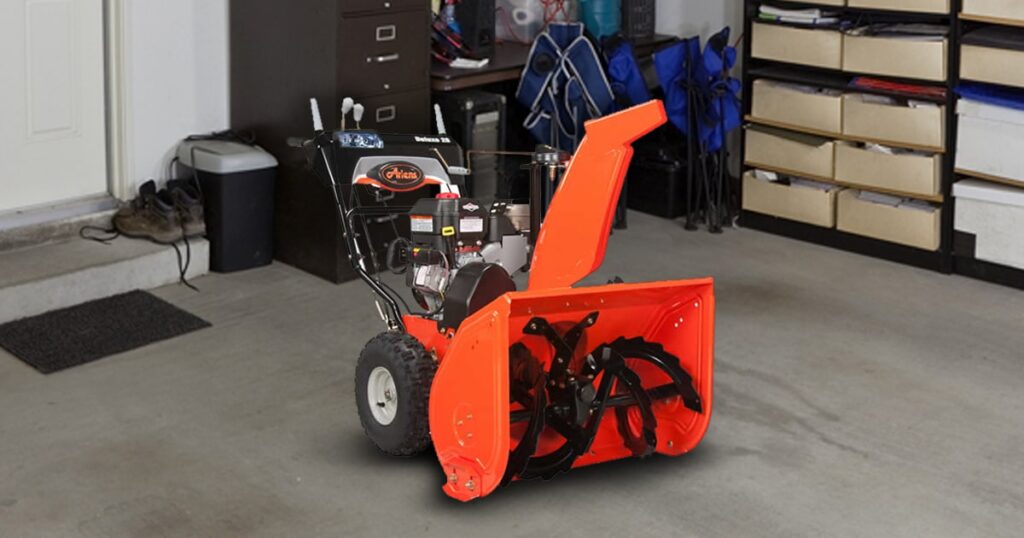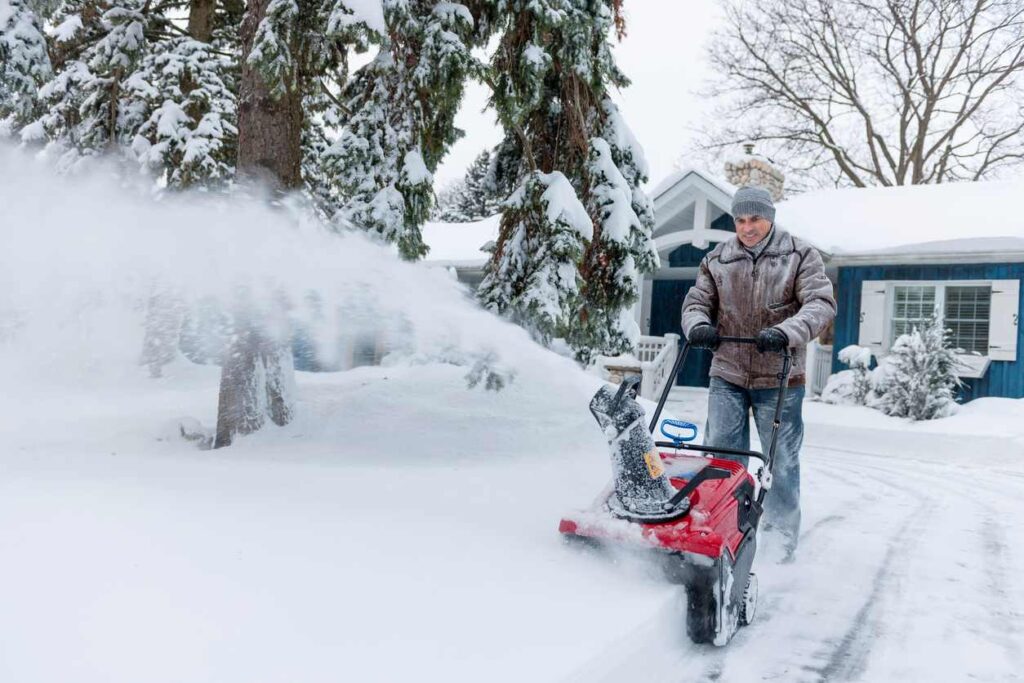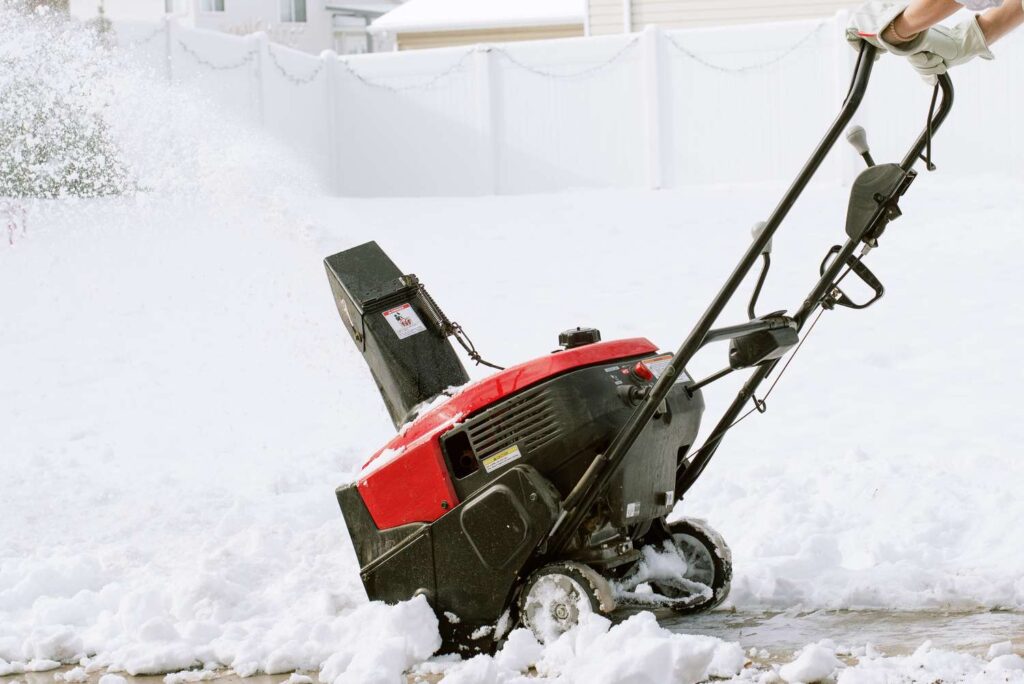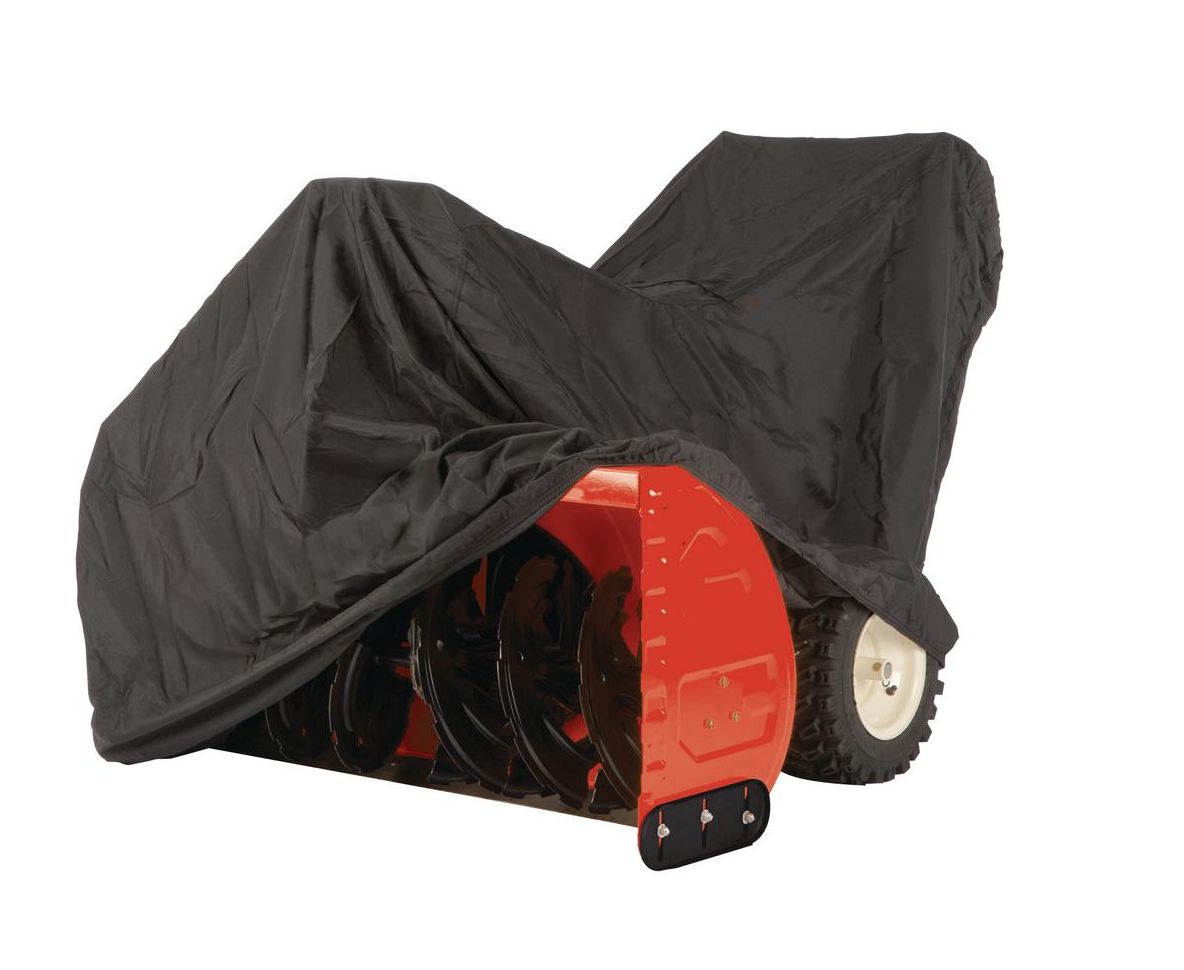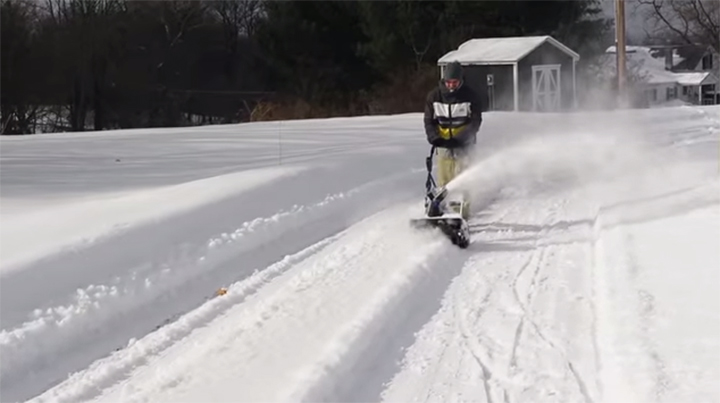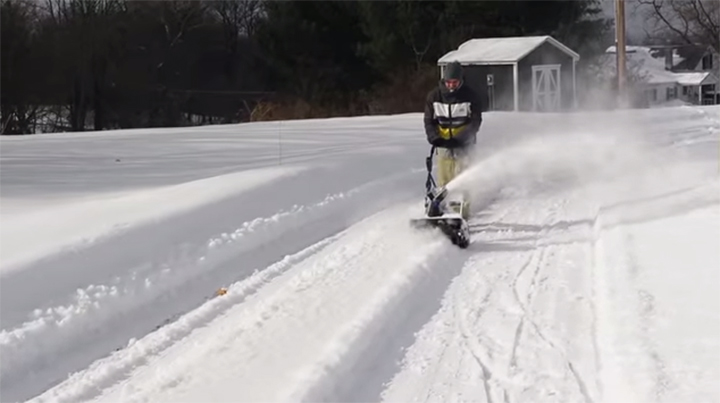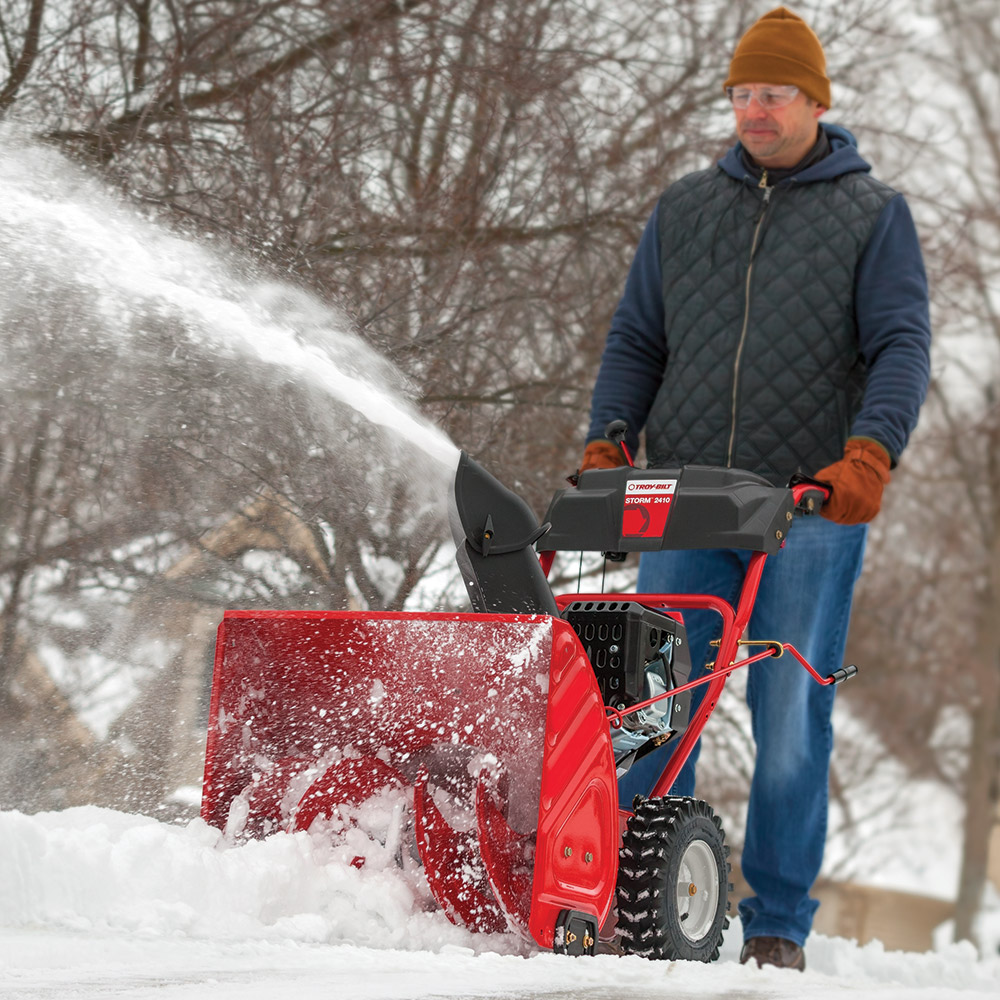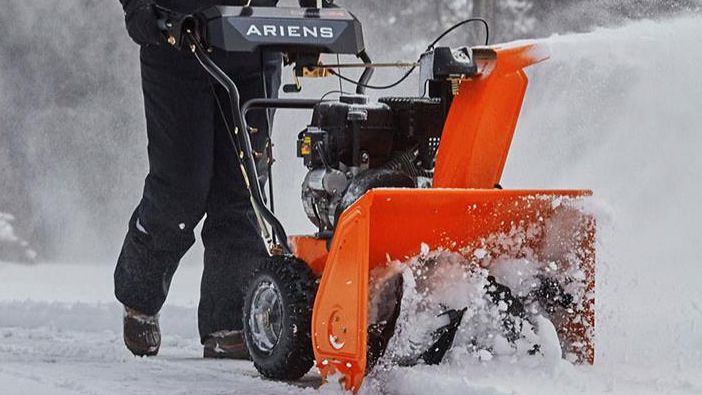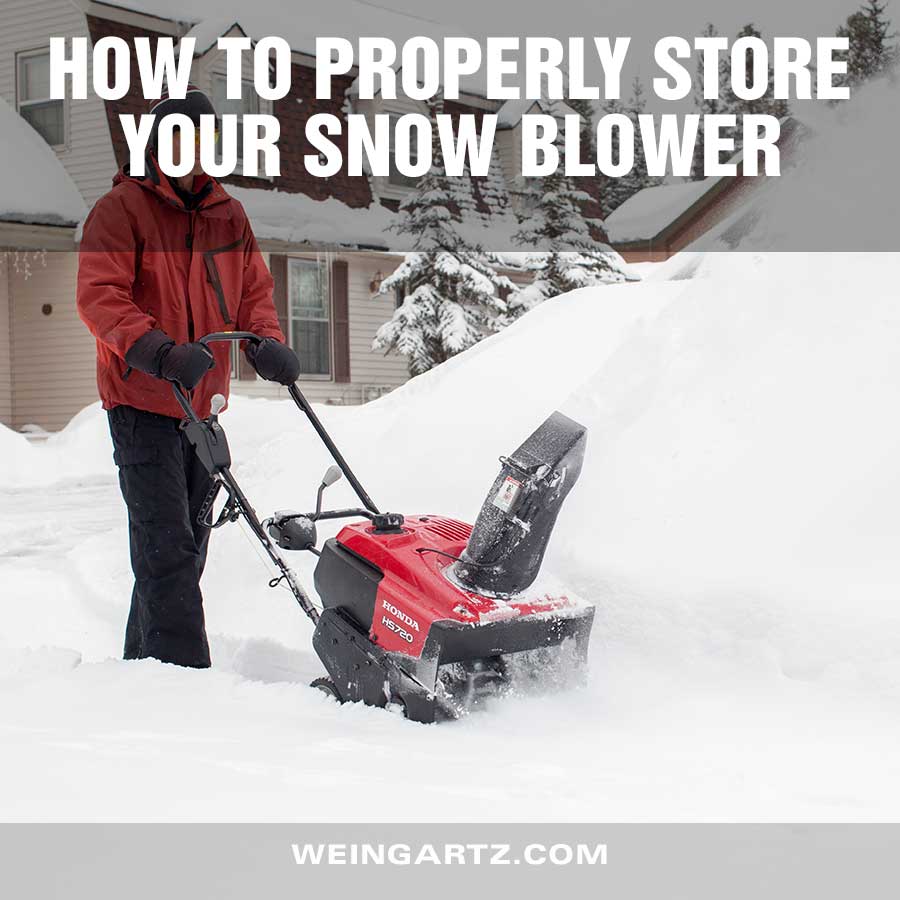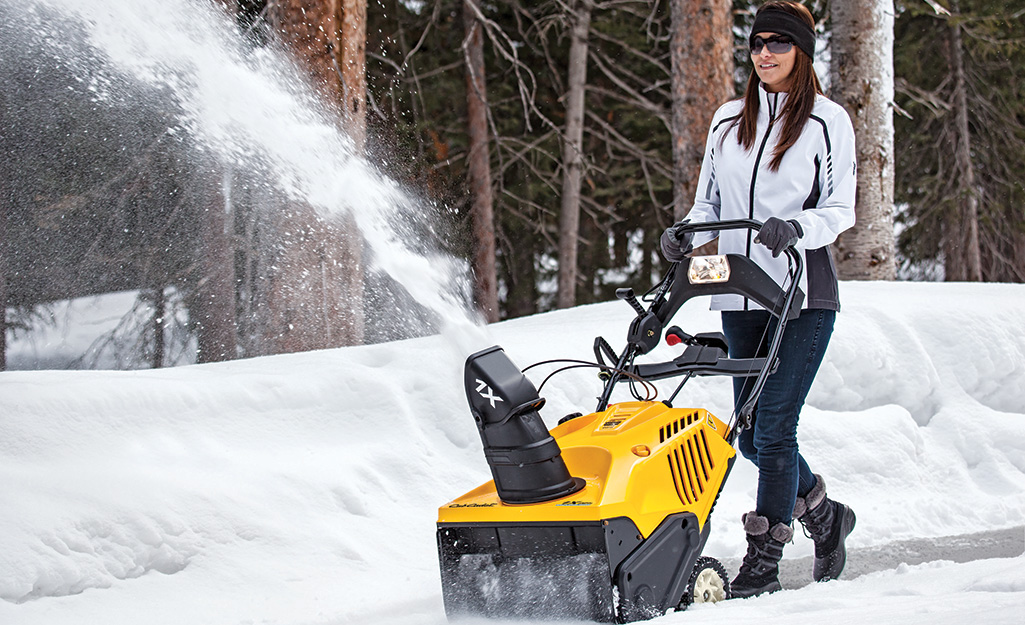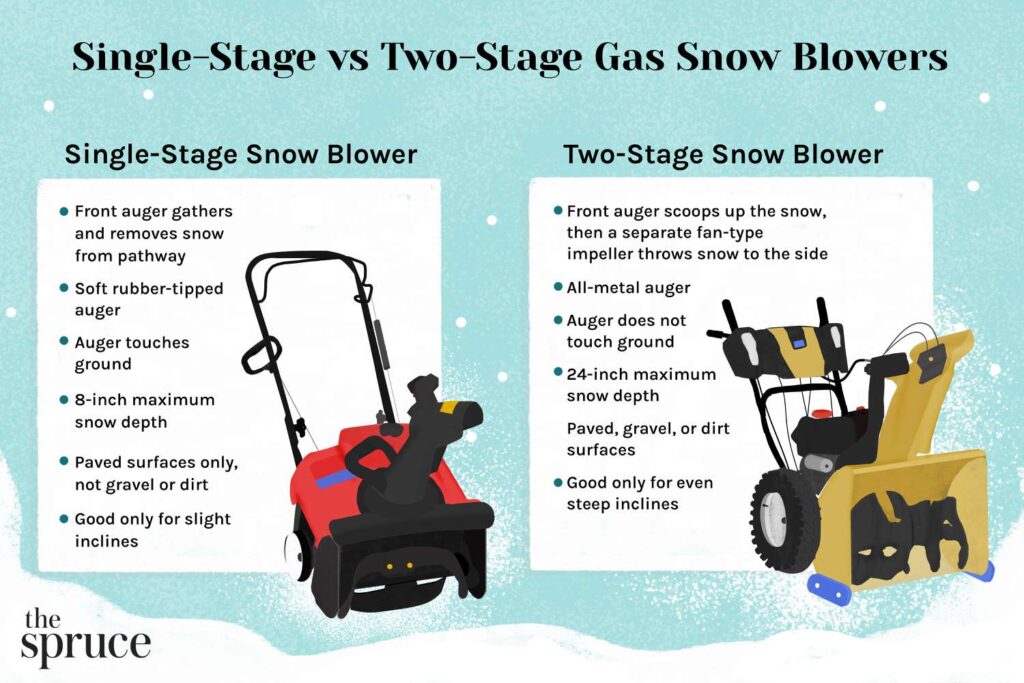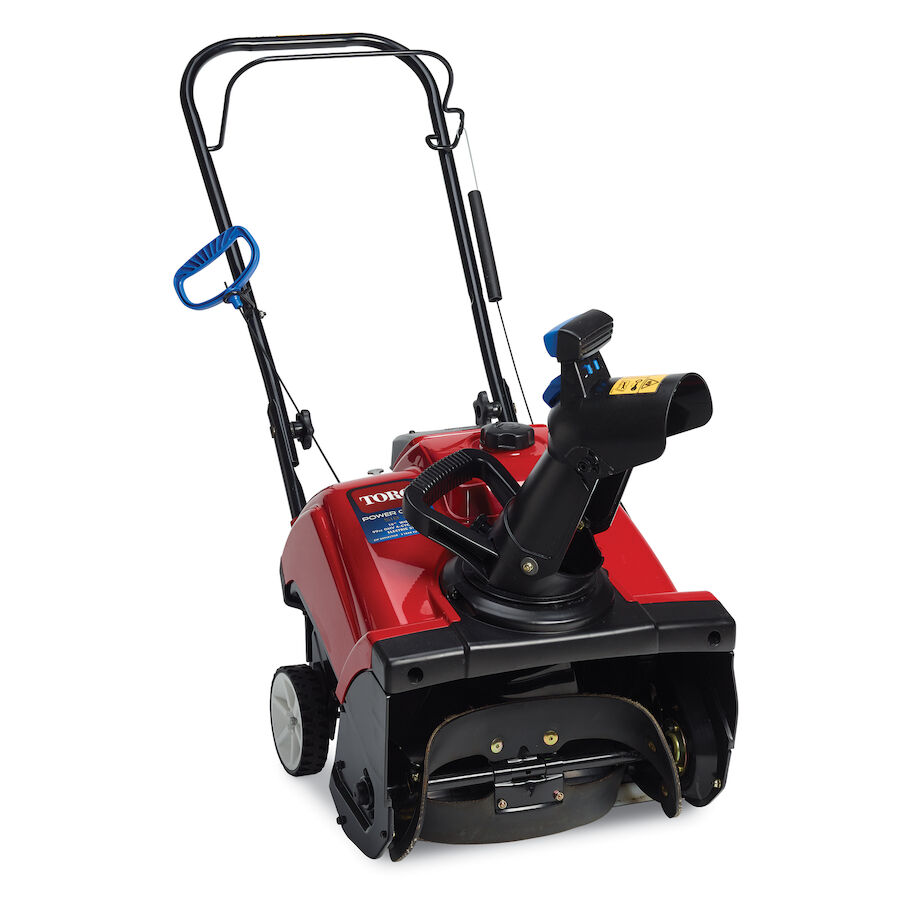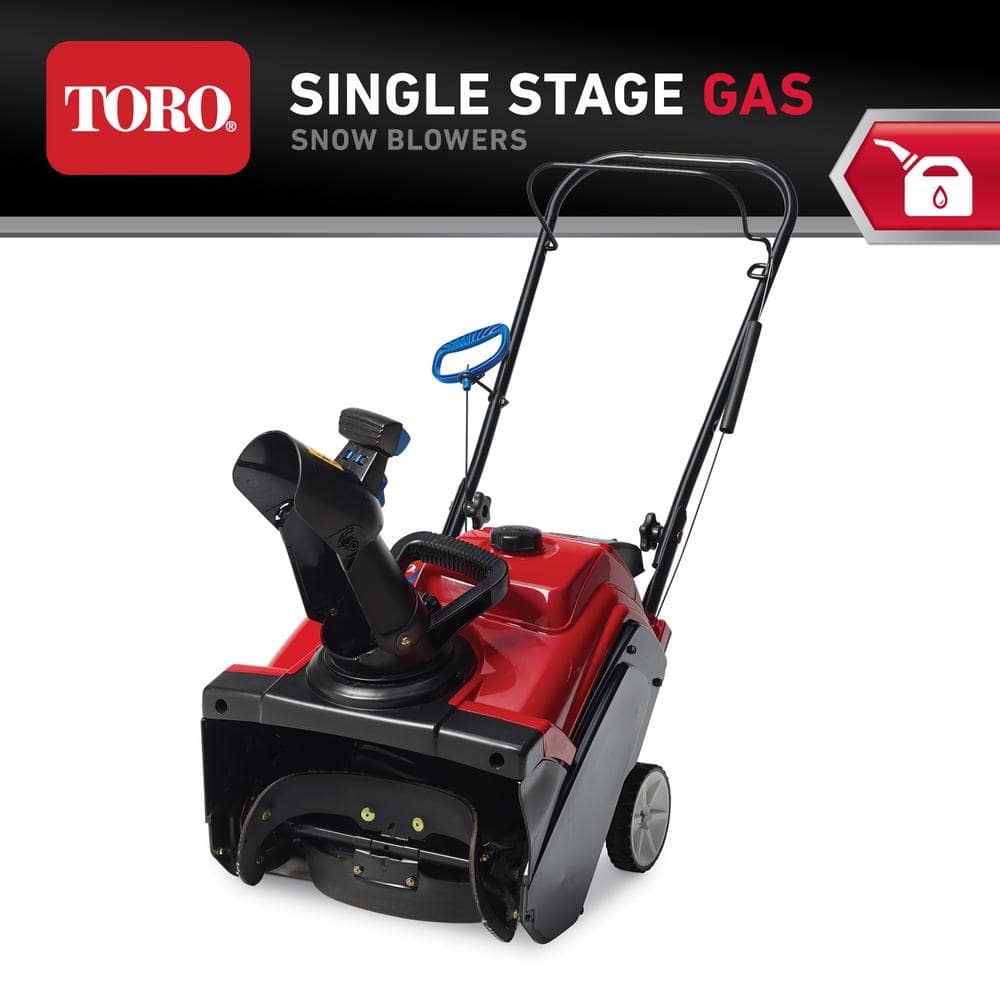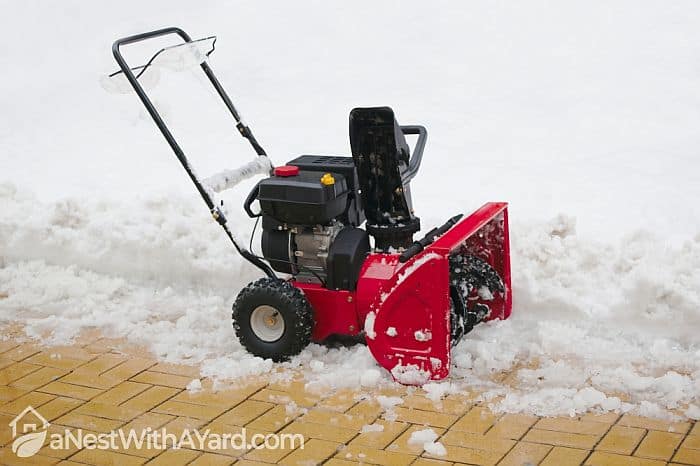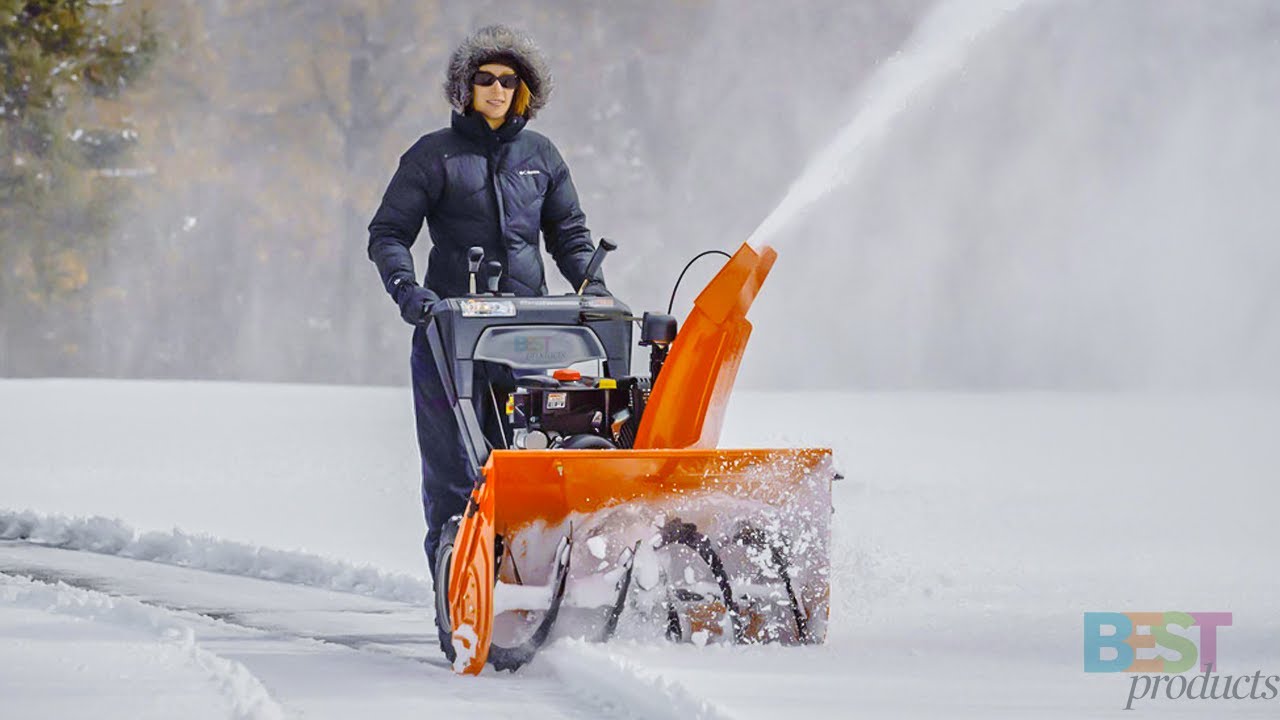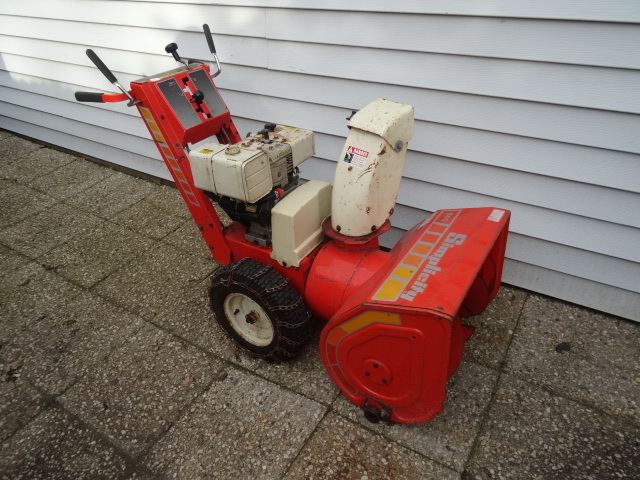In this article, we’re going to talk about the depth of snow required to effectively use a snowblower. Snowblowers are a great tool for clearing large amounts of snow quickly and efficiently, but it’s important to know when they can be most effective. By the end of this article, you will have a better understanding of the optimal snow depth for snowblower use.
When it comes to using a snowblower, the general rule of thumb is that the snow should be at least 6 inches deep. This is because snowblowers work best when there is a significant amount of snow to remove. If the snow is too shallow, the snowblower may not be able to effectively scoop up and throw the snow, resulting in a less efficient clearing process. However, it’s important to note that different types of snowblowers may have different depth requirements, so it’s always a good idea to consult the manufacturer’s instructions for your specific model.
Understanding Snowblowers
Snowblowers are essential tools for clearing snow from driveways, walkways, and other areas during the winter season. They come in different types and sizes, each designed to handle various snow conditions and volumes. In this article, we will explore the different types of snowblowers available, the principles of their operation, and the benefits of using them.
Different types of snowblowers
There are three main types of snowblowers: single-stage, two-stage, and three-stage.
Single-stage snowblowers
Single-stage snowblowers are lightweight and easy to maneuver. They are ideal for clearing light to moderate snowfall on small to medium-sized areas. These snowblowers feature an auger that rotates and throws snow out of the chute, directly onto the cleared area.
Two-stage snowblowers
Two-stage snowblowers are more powerful and can handle heavier snowfall and larger areas. They have an auger that collects the snow and a separate impeller that throws the snow out of the chute. This design allows two-stage snowblowers to clear deeper and heavier snow more efficiently.
Three-stage snowblowers
Three-stage snowblowers are the most powerful and are designed to tackle heavy snow and ice. They have an additional accelerator that breaks up the snow and feeds it into the auger and impeller. This extra stage improves the snowblower’s performance in challenging winter conditions.
Principles of snowblower operation
Regardless of the type, snowblowers operate on the same basic principles. They use an engine to power a rotating auger or paddles that collect the snow. The collected snow is then thrown out of a discharge chute, clearing the desired area. The speed and rotation of the auger and impeller determine how far the snow is thrown.
Benefits of using a snowblower
Using a snowblower offers several advantages over traditional snow removal methods like shoveling. Here are some of the key benefits:
-
Time-saving: Snowblowers can quickly clear large amounts of snow, saving you time and effort compared to shoveling.
-
Reduced physical strain: Snowblowers take the physical strain off your body, especially if you have a large area to clear or if the snow is heavy and wet.
-
Increased efficiency: Snowblowers are designed to remove snow efficiently, minimizing the need for additional passes or manual labor.
-
Cleaner and neater results: Snowblowers clear the snow in a uniform and neat manner, leaving a clean surface behind.
Ideal Snow Depth for Efficient Snowblowing
While snowblowers are versatile machines, there is a minimum snow depth required for them to work effectively. Here, we will discuss the factors that affect snowblower efficiency, the minimum snow depth required, and how to determine if the snow is deep enough for snowblowing.
Factors affecting snowblower efficiency
Several factors can impact the efficiency of a snowblower, including:
-
Snow density: Wet and heavy snow can be more difficult for a snowblower to handle, requiring more power and potentially reducing efficiency.
-
Temperature: Extremely cold temperatures can cause snow to become dense and ice-like, making it harder for a snowblower to clear.
-
Snow consistency: If the snow is compacted or has a crust, it can be more challenging for a snowblower to break up and remove.
Minimum snow depth required for a snowblower
The minimum snow depth required for a snowblower depends on the type and size of the machine. Generally, single-stage snowblowers can handle snow depths of 6 to 8 inches, while two-stage and three-stage snowblowers can handle snow depths of 8 to 10 inches or more.
Signs that the snow is deep enough for a snowblower
To determine if the snow is deep enough for a snowblower, there are a few signs to look for:
-
The snow is higher than the clearance height of the snowblower. Each snowblower has a specified clearance height, which is the maximum depth of snow it can effectively handle.
-
The snow is not easily shoveled or cleared by other means. If the snow is too heavy or compacted for shoveling, it is likely deep enough to require a snowblower.
-
The snowblower is able to effectively collect and throw the snow. If the snowblower is consistently clogging or struggling to throw the snow, it may be an indication that the snow is not deep enough for optimal performance.
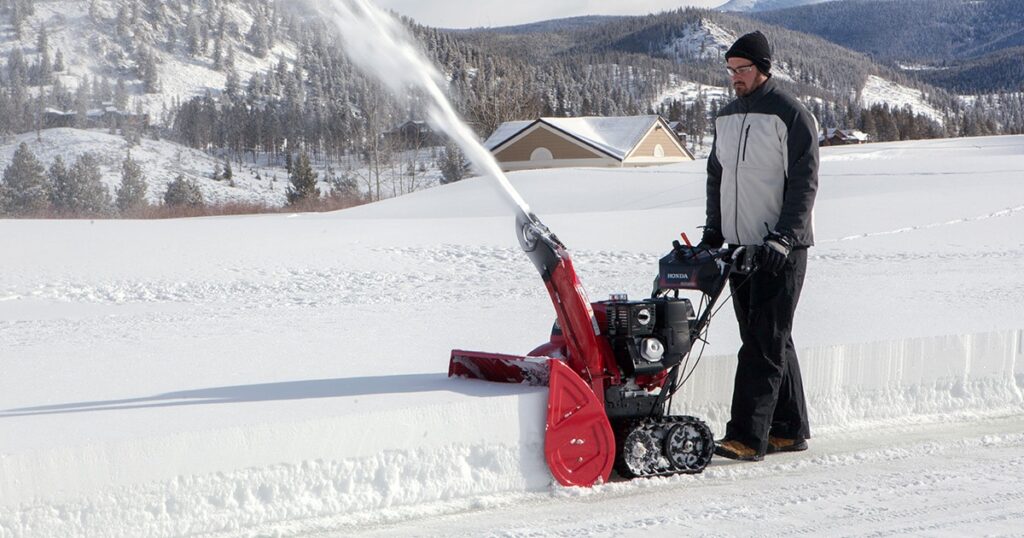
This image is property of www.snowblowersdirect.com.
Determining the Appropriate Snow Depth
When determining the appropriate snow depth for snowblowing, it is essential to consider the manufacturer’s recommendations and the snowblower’s clearing width. Additionally, adjusting the snow depth settings on the snowblower can help optimize its performance.
Snowblower manufacturer recommendations
Each snowblower model comes with specific recommendations from the manufacturer regarding the ideal snow conditions it can handle. It is crucial to review these recommendations before using the snowblower to ensure optimal performance and prevent damage.
Considering the snowblower’s clearing width
The clearing width of a snowblower determines how much snow it can remove in a single pass. It is essential to match the clearing width of the snowblower to the width of the area you need to clear. Doing so will minimize the number of passes required, saving you time and energy.
Adjusting snow depth settings on the snowblower
Most snowblowers allow you to adjust the height or depth at which the auger makes contact with the ground. This adjustment is crucial to ensure that the snowblower effectively collects the snow without scraping the ground. Adjusting the snow depth settings can also help prevent damage to the snowblower and the cleared area.
Advantages of Using a Snowblower in Deep Snow
While snowblowers can be used for various snow depths, there are significant advantages to using them in deep snow situations. Here are some of the benefits you can experience when using a snowblower in deep snow:
Efficiency gains with increasing snow depth
As the snow depth increases, the efficiency of a snowblower improves. Deeper snow allows for better collection and throwing of the snow, resulting in faster and more effective snow removal. Snowblowers designed for deep snow conditions can clear large areas quickly without requiring multiple passes.
Reduced physical strain for the operator
Shoveling snow in deep conditions can be physically demanding and put strain on your back and arms. Using a snowblower eliminates the need for heavy lifting and repetitive movements, reducing the risk of injuries and physical strain. This is especially important for individuals with limited mobility or health concerns.
Preserving the quality of the cleared area
Deep snow can be challenging to remove using manual methods, often leaving uneven surfaces or patches of hard-packed snow. Snowblowers can remove deep snow more effectively, leaving a clean and even surface behind. This is particularly beneficial for areas like driveways, walkways, and parking lots, where a smooth surface is important for safety and convenience.
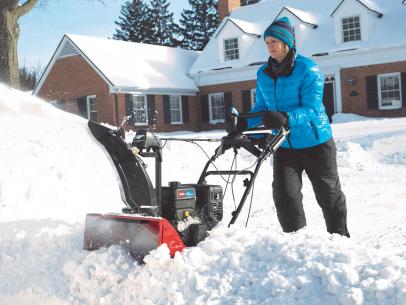
This image is property of hgtvhome.sndimg.com.
Precautions and Limitations
While snowblowers are efficient and convenient tools for snow removal, there are some risks and limitations to be aware of. Understanding these precautions will help you safely and effectively use a snowblower in deep snow conditions.
Risks associated with using a snowblower in deep snow
Using a snowblower in deep snow presents some risks, such as:
-
Clogging: Deep snow can clog the auger or chute of a snowblower, requiring frequent stops and manual clearing. This can be time-consuming and frustrating.
-
Debris hidden beneath the snow: Deep snow can conceal obstacles or debris, such as rocks, branches, or ice chunks. These hidden objects can damage the snowblower or pose a safety risk if thrown out of the chute.
-
Slippery and uneven terrain: Deep snow can make it challenging to maintain balance while operating a snowblower. Uneven terrain or hidden icy patches can increase the risk of slips, falls, or accidents.
Operating considerations during heavy snowfall
Using a snowblower during heavy snowfall requires additional precautions, such as:
-
Clearing snow in stages: If the snowfall is continuous and heavy, it may be necessary to clear the snow in stages. This approach prevents snow accumulation from exceeding the snowblower’s capacity and reduces the strain on the machine.
-
Regular maintenance and cleaning: During heavy snowfall, snow can accumulate faster than the snowblower can remove. Regularly check and clean the auger and chute to prevent clogging and maintain optimal performance.
Understanding the limitations of a snowblower
While snowblowers are powerful machines, they do have some limitations. For example:
-
Deep and packed ice: Snowblowers may struggle to remove deep or tightly packed ice, as it is harder and denser than regular snow. In such cases, it may be necessary to use alternative methods or seek professional assistance.
-
Steep slopes and tight spaces: Snowblowers may not be suitable for clearing snow on steep slopes or in tight spaces, as they require more maneuverability and control. Shoveling or hiring professional services may be better alternatives in these situations.
Alternative Snow Removal Methods
While snowblowers are effective tools, there are alternative methods for snow removal that may be better suited to specific situations. Here are a few options to consider:
Shoveling as an alternative
Shoveling is a traditional and cost-effective method for removing snow. It is ideal for clearing smaller areas, such as walkways and stairs, where a snowblower may be challenging to use. Shoveling also provides a more precise and controlled removal of snow, allowing you to protect delicate surfaces or clear around obstacles effectively.
Using a snow plow
Snow plows are commonly used for clearing larger areas like parking lots, roadways, and expansive driveways. They are typically attached to vehicles, such as trucks or tractors, and are highly efficient at pushing large volumes of snow out of the way. Snow plows are particularly useful when dealing with heavy snowfall or when the area to be cleared is too extensive for a snowblower.
Hiring professional snow removal services
In cases where snow removal is a significant undertaking, or if you have limited time, energy, or physical ability, hiring professional snow removal services is a viable option. These services have the equipment and expertise to handle any snowfall intensity and can ensure that your property is cleared promptly and effectively.
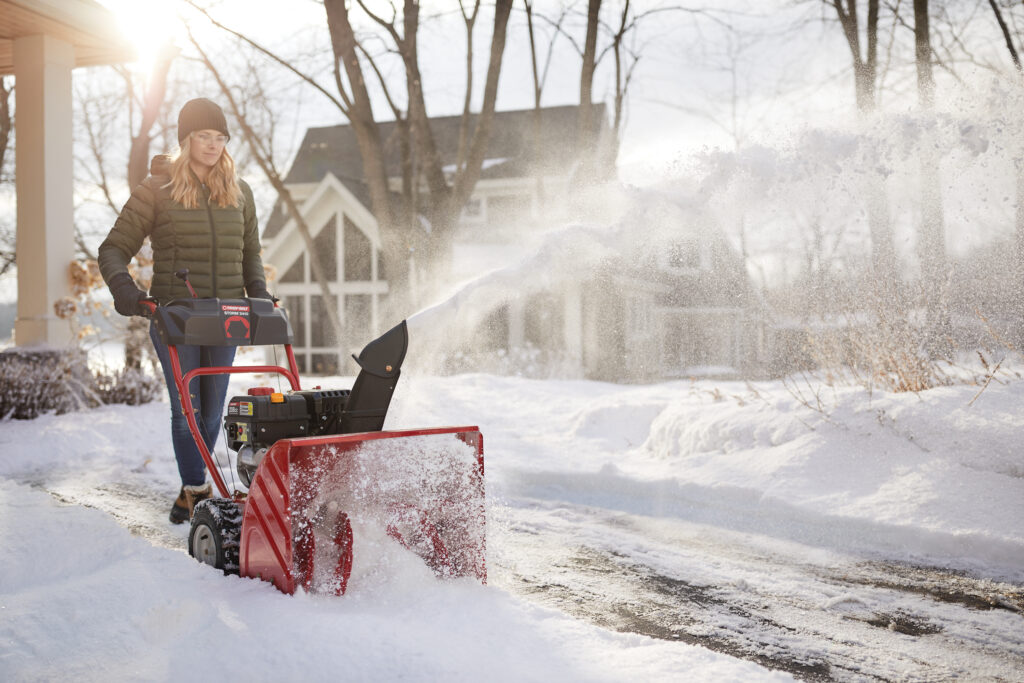
This image is property of cdn.mos.cms.futurecdn.net.
Choosing the Right Snowblower
When selecting a snowblower, several factors should be taken into consideration to ensure you choose the right one for your needs. Here are some key points to keep in mind:
Considering the frequency of heavy snowfall
If you live in an area with frequent heavy snowfall, it is advisable to invest in a more powerful snowblower capable of handling deep and dense snow. This will ensure optimal performance and durability over the long term.
Assessing the size of the area to be cleared
The size of the area you need to clear will determine the appropriate clearing width and capacity of the snowblower. Consider the dimensions of your driveway, walkways, and any other areas you plan to clear to ensure the snowblower can efficiently handle the job.
Evaluating additional features and requirements
Different snowblower models offer various features and options that may suit your specific needs. Consider factors such as electric start, adjustable chute control, heated handles, and headlight options. Additionally, consider your specific requirements, such as noise levels, emissions, and maintenance needs.
Maintenance and Care for Snowblowers
To ensure that your snowblower operates optimally and has a long lifespan, it is essential to perform regular maintenance and care. Here are some key maintenance tasks to keep in mind:
Regular cleaning and lubrication
Snowblowers should be cleaned after each use to prevent snow and ice buildup, which can lead to rust and damage. Pay attention to the auger, chute, and other moving parts, making sure they are free of debris and fully functional. Additionally, regularly lubricate the moving parts to ensure smooth operation.
Inspecting and replacing parts
Regularly inspect all components and replace any worn or damaged parts. This includes checking the belts, auger blades, and shear pins for signs of wear and tear. Replace any broken or damaged parts immediately to prevent further damage and ensure optimal performance.
Winterizing the snowblower
Before storing the snowblower for the off-season, it is essential to properly winterize it. This includes draining any fuel remaining in the tank and adding a fuel stabilizer to prevent fuel degradation. Additionally, clean the snowblower thoroughly and store it in a dry, covered area to protect it from moisture and rust.
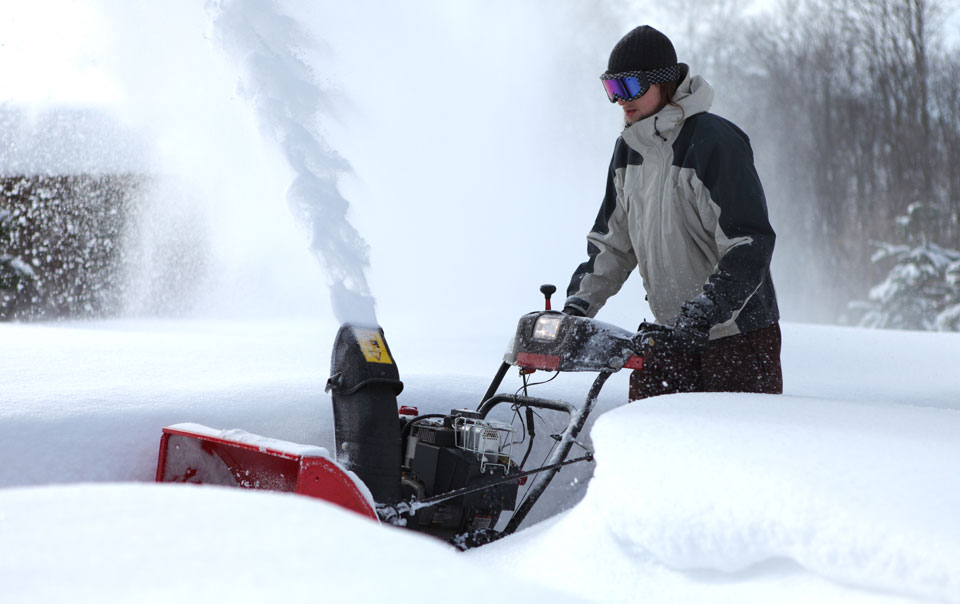
This image is property of www.travelers.com.
Winter Safety Tips
When operating a snowblower, it is essential to prioritize safety, both for yourself and others. Here are some winter safety tips to keep in mind:
Dressing appropriately for cold weather
Layer your clothing to stay warm and wear insulated, waterproof boots to protect your feet from snow and moisture. Be sure to wear gloves, a hat, and a scarf to protect your extremities from frostbite and hypothermia.
Avoiding common snowblower hazards
Always follow the manufacturer’s instructions and safety guidelines when operating a snowblower. Avoid wearing loose-fitting clothing or jewelry that may get caught in the machine. Keep hands and feet away from moving parts and never attempt to clear a clog with your hands.
Understanding frostbite and hypothermia symptoms
Be familiar with the signs and symptoms of frostbite and hypothermia. If you or anyone you are with shows signs of numbness, tingling, pale or waxy skin, confusion, dizziness, or slurred speech, seek immediate medical attention.
Conclusion
Knowing how deep the snow needs to be to use a snowblower can help you effectively and efficiently clear snow during the winter season. By understanding the different types of snowblowers, their principles of operation, and their benefits, you can make an informed decision about which snowblower is right for you. Additionally, considering the appropriate snow depth, maintenance and care, and winter safety tips will ensure a safe and successful snowblowing experience. So, embrace the winter season and equip yourself with a reliable snowblower to make the task of snow removal easier and more manageable.
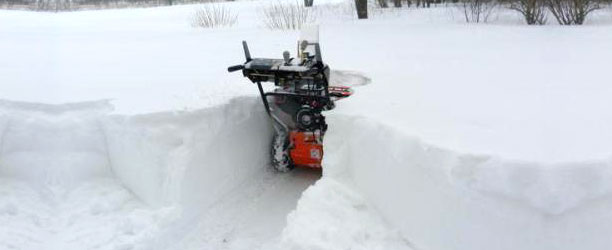
This image is property of www.lelandinsurance.com.

